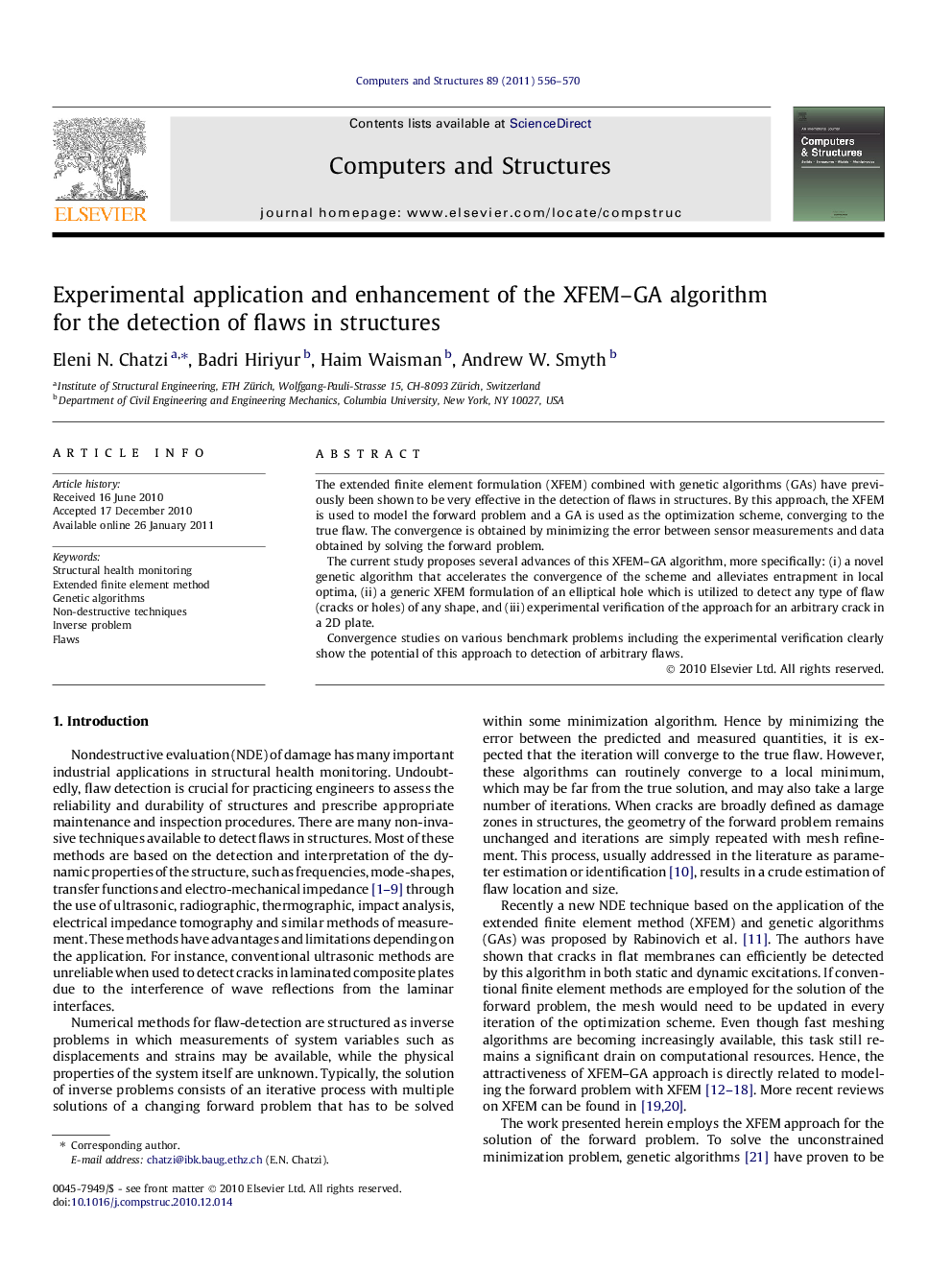| Article ID | Journal | Published Year | Pages | File Type |
|---|---|---|---|---|
| 510368 | Computers & Structures | 2011 | 15 Pages |
The extended finite element formulation (XFEM) combined with genetic algorithms (GAs) have previously been shown to be very effective in the detection of flaws in structures. By this approach, the XFEM is used to model the forward problem and a GA is used as the optimization scheme, converging to the true flaw. The convergence is obtained by minimizing the error between sensor measurements and data obtained by solving the forward problem.The current study proposes several advances of this XFEM–GA algorithm, more specifically: (i) a novel genetic algorithm that accelerates the convergence of the scheme and alleviates entrapment in local optima, (ii) a generic XFEM formulation of an elliptical hole which is utilized to detect any type of flaw (cracks or holes) of any shape, and (iii) experimental verification of the approach for an arbitrary crack in a 2D plate.Convergence studies on various benchmark problems including the experimental verification clearly show the potential of this approach to detection of arbitrary flaws.
